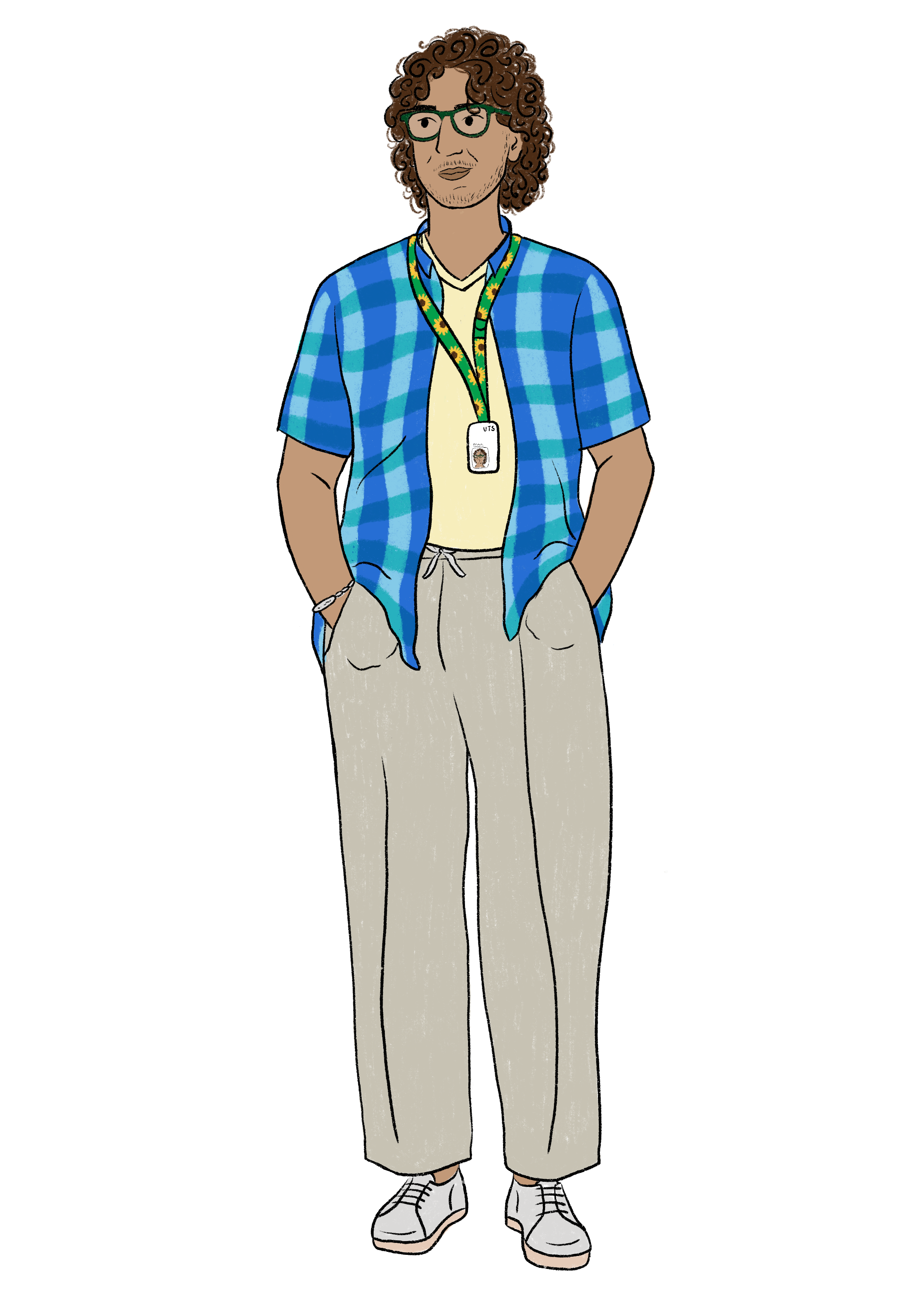Meet Nasim, who is neurodivergent (has ADHD). Learn about Nasim’s accessibility requirements to better understand how to support students who have similar conditions.
Nasim is a 23-year-old students who uses he/him pronouns. His life motto is “Be me, be free”.
Nasim is neurodivergent – he has Attention Deficit Hyperactivity Disorder (ADHD). He lives in a share house with his friends, and his goal is to learn new skills that he can pass onto the next generation in his profession.
Here are some of the things that Nasim needs in order to be able to participate in class:
- Frequent opportunities to take breaks helps Nasim to avoid feeling overstimulated.
- Access to alternative assessments – Nasim may need to have large assignments broken up into smaller tasks and weighted differently.
- Opportunities to be ‘hands-on’ in class is more engaging for Nasim than just sitting and listening. Including different types of activities throughout the class is helpful for him.
- Appreciates guidance and encouragement around active engagement – try motivating students to actively engage with their reading by underlining, highlighting, and writing down their responses and questions about texts.
- Appreciates encouragement and tips for creating a quiet and organised study environment, along with productivity tools such as to-do lists, diaries etc. You can direct students to the Student Learning Hub, which provides support and resources such as study planners (can also be accessed online).
- Needs clear instructions and subject information so he knows what to expect for the upcoming session and has time to prepare. Ensure any important detail about the course is provided before the session starts – e.g. assessment details and dates, reading lists.
- Patience, understanding and reassurance go a long way in helping Nasim to feel welcomed and confident. Nasim fears that people might find him annoying or disruptive. Sometimes he needs to ask multiple questions for clarification, and people may misinterpret his body language as being distracted or not paying attention.
Here are some of the barriers that Nasim deals with in daily life.
- Has trouble staying focused to complete tasks and finding what he needs.
- Can have trouble understanding assignments when the instructions are not articulated with clear language.
- Feels left behind and isolated when he has trouble keeping up with the class.
- Long classes may not include breaks.
- Classes may not be recorded, meaning Nasim cannot refer back to a recording to catch information he missed the first time.
Online
- Some subjects use platforms like Miro to track participation, but the systems can be overwhelming and hard to use.
- Reaching out for help can feel overwhelming or depersonalised, especially when he needs to send a formal email to someone he doesn’t know.
On campus
- Presentation slides may lack visual aids or not be stimulating enough (e.g. diagrams, videos, colour).
- Lack of opportunities for hands-on activities during class.
- Students may feel shy to sit near the front of classroom, even though this will help them concentrate.
- Lack of quiet study spaces.
- Important information isn’t repeated/emphasised.
The following resources provide more information about supporting students with ADHD.
